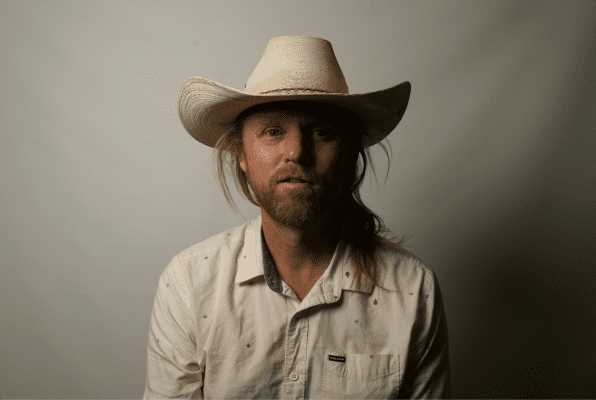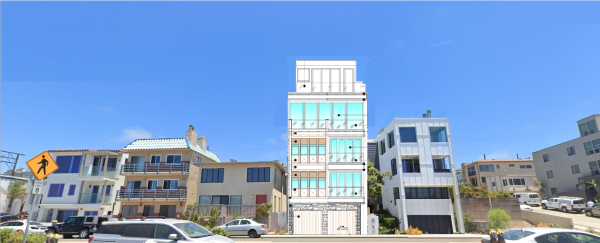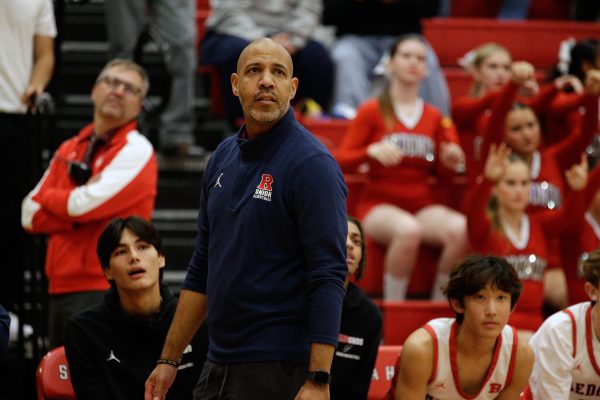Before the end of October, E&B Natural Resources of Bakersfield will file its detailed application to drill undr the sea, continuing the rich, nearly 90-year-old drama of oil battles in Hermosa Beach.
At the earliest, city voters will decide in the spring of 2014 whether or not to allow wells dug at the maintenance yard. It will be the fifth election in the city’s history to, once again, settle the question of whether to allow oil and gas drilling.
Some activists have been around since the beginning.
The Torrance Oil Field was discovered in 1922, at about the same time oil wells were popping up on nearly every lot in Signal Hill, which sat on the vast Wilmington Oil Field. And Hermosans visiting friends or family in Signal Hill didn’t like the sight and smell of all those oil wells, said Barbara Guild, an anti-oil activist during the 1958 election.
In 1929, Gus O’Connor, a Harvard-educated attorney, successfully began spearheading a campaign to ban oil and gas drilling in Hermosa Beach. Hermosa Beach was a summer vacation town at the time, with wells and derricks and a much smaller population during the off season. Voters approved the oil drilling ban in 1932.
“He didn’t want oil wells that we saw popping up in Venice and Signal Hill particularly to happen in Hermosa,” said Guild, 85.

O’Connor was Catholic and had five children, some of whom Guild knew because they were all contemporaries of her husband Don and close friend, the late Coralie Ebey, who went on to become an Easy Reader columnist.
Guild got involved in opposing Shell Oil’s bid to drill in Hermosa Beach in 1957 along with Ebey, who at the time suggested they speak with O’Connor. After helping to defeat Shell’s bid to drill in 1958, Guild provided her knowledge of oil resistance to the next generation more than 25 years later.
“Gus O’Connor handed the baton to me and Coralie and said, ‘Okay, you guys are the next generation. You take care of it,’” Guild said. “And so that’s basically what I did with Rosamond. Just as Gus passed the baton to Coralie and me, I passed it to Rosamond Fogg. She sounded really eager.”
Fogg, whose 1,200-member Stop Oil Coalition successfully derailed Macpherson Oil’s project in the 1990s after the 1984 vote made exceptions to the drilling ban, is now Rosamond d’Orlac of San Pedro.
“I do recall us agreeing that it was like a relay race, and it was kind of like my turn,” d’Orlac said.
D’Orlac remembered that Guild also made a monetary contribution. “Always helpful,” d’Orlac added.
“She came and sat with me at my house and I told her everything she needed to organize her group,” Guild said. “She needed to do research. She needed to counteract their data.”
Guild and her husband, who own and maintain a home on The Strand, have spent most of the last 30 years in Hawaii, including the last eight winters in Utah. This year was the first Fourth of July she spent in Hermosa Beach in 27 years.
Guild said she decided to get involved again in opposing oil drilling in Hermosa Beach last year when she read that the liability potential for the city against Macpherson could total $750 million. The two City Council meetings she attended earlier this year were the first she attended since the 1950s, and she spoke critically of the city’s settlement agreement with Macpherson.
Since getting involved again, Guild and a handful of friends have chatted weekly on the phone to research and organize. Guild said her inner circle consists of “old-old time Hermosa Beach people,” and she does not have interest in becoming the leader of today’s opposition.

“I have tried to do my homework so that we can organize when the time comes because we don’t have just a month to do it like we had [in the ‘50s],” Guild said. “I guess that I am an environmentalist at heart.”
Cohn concern
Jeff Cohn moved to Sixth Street in 2003, about 90 yards from the proposed drilling site in the city maintenance yard property. Cohn said that the settlement between the city, Macpherson and E&B in March took him by surprise.
E&B ended 14 years of legal limbo for the city when it paid Macpherson $30 million as part of a March settlement to avoid a trial against Hermosa Beach. Essentially, E&B bought the opportunity to convince voters that oil exists, residents will benefit from the royalties, and the oil can be produced safely and in an environmentally acceptable manner.
E&B is proposing to directionally drill from the city’s maintenance yard at Sixth Street and Valley Drive at an angle to tap into underwater oil reserves off Hermosa Beach’s shores. The city was spared the potential of paying up to $750 million if it lost the lawsuit, and Macpherson gave E&B the lease, permits and all rights.
City officials say it was a terrific deal to broker just before the case went to trial. Anti-oil activists criticize it for once again opening the door for oil drilling in Hermosa Beach, population 19,000.
“I really had no idea that it would ever become an issue ever again. It angered me,” Cohn said. “The fact of the matter is the city is putting the burden back on the residents and the neighbors again to basically fight this thing because they couldn’t settle it themselves.”
If the ban is not repealed, the city, which has an annual budget of about $26 million, will pay $17.5 million to E&B. If the ban is repealed, the city would receive about 15 percent of oil revenues under a formula. But if no oil is found, the city would pay E&B up to $3.5 million.
Within a couple days of the settlement announcement, Cohn put up a website (nobpinhb.com) featuring critical information about the proposed drilling project. Cohn, the son of City Treasurer David Cohn, said he works in the internet-media business and operates a couple of crowd-sourcing businesses.
“I said, hey, I’ve got to start publishing this information and exposing this. It looks like the city is trying to hide stuff,” Cohn said. “Oil drilling belongs in areas where it won’t affect people’s lives. It doesn’t belong next to a densely populated area.”
Cohn said he began receiving offers to help, and dozens are now actively researching online, fundraising, doing graphic design and legal work. Cohn runs the website, which has had more than 2,200 unique visitors since March and more than 25,000 page views.
Cohn questions Layton’s leadership abilities as well as E&B’s owner, Francesco Galesi. Galesi was a board member of WorldCom telecommunications, the second-largest bankruptcy in U.S. history in 2002.
A real estate magnate, Galesi was one of a group of directors at WorldCom that hired Scott Sullivan as CFO. Galesi was also one of a group of directors at WorldCom that agreed to pay $20 million to settle lawsuits filed by defrauded investors after Sullivan cooked the books.
Galesi was cleared of any criminal wrongdoing. Cohn and others say it’s because U.S. laws protect the super rich.
Latyon defends Galesi, calling him a “visionary,” an “inspiration” and “one of the most positive people I know.”

Layton was in high school in southeastern Kansas when he met Galesi for the first time. Galesi was visiting his older brother Michael’s investment in Layton’s father’s oil company, Layton Oil. Layton’s father, William Douglas Layton, and Michael Galesi were introduced by a mutual acquaintance at an oil and gas exposition in Tulsa, Oklahoma, in the late 1960s, Layton said.
After the trip to see his brother’s oil wells, Galesi participated in venture projects with Layton Oil, but was not a direct investor, Layton said.
Layton attended graduate school for business before joining the family oil business. After Layton Oil went out of business in 1983, Layton, his father and Mike Galesi co-founded Alma Energy and Equinox Oil a few years later.
Over the years, Layton has befriended the Galesi brothers, saying the youngest, Denny, is one of the funniest people he knows. Layton said he and his wife Anita are very close to Mike Galesi and his wife.
Company history
In 1998, Layton was president of Equinox when a blowout preventer did not activate properly while a well in coastal Louisiana was being completed. Oil spewed 200-300 feet in the air until it was brought under control 11 hours later by emergency response teams. More than 1,200 acres of wetlands were exposed to oil, according to public documents.
There are a lot of differences between Louisiana and California and the likelihood of that incident in Hermosa Beach, Layton said. The Gulf Coast is more volatile, with more gas and both oil and gas under higher pressure.
Whenever you drill, you have the possibility of events like that occurring even though they are rare, Layton said. If it happens, the company must be ready to deal with it. Layton said he has first-hand experience, and Hermosa Beach residents will be the judge of whether that’s a good thing or bad thing.
It’s possible someone can view his experience dealing with an oil spill as a good thing. If someone can’t see it that way, he understands.
“I do know the significance of an event like that,” Layton said. “I can understand how an event like that can have a significant impact on a lot of different people.”
Layton said Equinox responded quickly to the clean up. The cost of the cleanup and low price of oil forced Equinox into bankruptcy nine months after the spill, Layton said.
“It was a life-changing experience,” Layton said. “I was president and owner. I lost everything I had in that company.”
In the fall of 2000, Galesi purchased Equinox assets out of bankruptcy and formed E&B Natural Resources, keeping Layton as president.
“The good that came out of it was I got to be in business with Francesco Galesi,” Layton said.
Two years later, WorldCom filed for bankruptcy. Galesi was one of four board members on WorldCom’s audit committee that signed off on $3.9 billion in costs misstated as revenue. It was the largest bankruptcy in U.S. history at the time.
“Our lives were turned upside down,” Layton said of himself and Galesi going through their respective bankruptcies.
Galesi, 81, is said to be intensely private. He reportedly got his start by buying an abandoned U.S. Army dump site in upstate New York in 1960 with a $4 million loan, and from there compiled a network of industrial parks valued at more than $100 million.
“He’s always been a guy who has had a vision of taking something that was not useful or in trouble but has potential, and trying to turn it into something that’s wonderful,” Layton said.
Since E&B began growing in 2003, Galesi has visited Bakersfield once or twice a month, Layton said. Galesi has rented a house in Hermosa Beach and stays there when he visits.
Layton acknowledges that Galesi’s age raises legitimate questions of long-term company ownership, but said there is a clear line of succession in place and E&B will not be sold off in the event Galesi can no longer serve as owner. Layton said he would become chairman.
“Francesco Galesi very much wants E&B to continue on,” Layton said. “He put in place a plan in the event he’s no longer with us. E&B would not be pieced out and sold. There is a succession plan. It’s set for me to be in charge.”
“The relationship the Galesi family has with my family is very, very longstanding,” Layton said. “A lot of oil companies that are not publicly traded have people from outside the business that provide capital or financial backing. Their business model is more short-term. They put the money in and they build it up and go to sell it and everybody goes and does something else.
“That’s not what the relationship is between our families. It goes back 30-some-odd years. Even though it’s different families, it’s a family business. That’s the nature of our relationship. And to me it’s something that does distinguish us not from everybody but from a lot of companies in this business in that there’s a long-term, stable relationship that’s seen some ups and downs. But it’s still standing. It’s still standing in a different form than it was, but it’s something that provides me with a great sense of comfort.”
Oil history: 1950s
Guild was born in 1926. After living in Pasadena, her parents moved to San Pedro and then to Torrance when Guild was in eighth grade. Guild and her friends used to climb on the wooden derricks in the Torrance Oil Field.
After graduating from Berkeley with a degree in mechanical engineering, Guild married Don Guild. They had 13 Guild Drug stores throughout Southern California, including at Pier and Hermosa avenues, which is now Rok Sushi, and Pacific Coast Highway and Artesia Boulevard, which is now the Goodwill store.
The Guilds even invested in a Texas gas well, and Barb Guild rented a mobile home nearby to watch the crew complete it.
No one attempted to revoke O’Connor’s ban on drilling until Shell and Continental Oil companies offered the city a $500,000 bonus in 1957 for the opportunity to drill into the Tidelands. For several years before that, the Bandini Petroleum Group had secured mineral rights with dozens of south end home and business owners, and the proprietors today continue to be project stakeholders.
“The south part in those days was like the wrong side of the tracks,” Guild said. “And so these people were very happy to sign an oil-mineral rights lease.”
After the city council signed the contract in December, an election was set for February. As E&B will do today, Shell paid for the 2014 election, city legal fees and cost of the review process.

Shell spent $250,000 on the campaign, the opposition about $4,500, Guild said. Shell paid for ads in the Daily Breeze and Tide, a Hermosa tabloid. Shell’s advertising agency wrote the content that was attributed to Dr. George Anderson, who headed the pro-oil Committee for Community Progress, according to the state lands commission hearings conducted after the election, as reported by a 1976 Easy Reader article.
Both pro and anti oil advocates invited neighbors over for “coffee and cake” sessions. Guild’s group of 15 residents gathered 547 signatures opposing the oil contract. Etta Simpson, who would go on to serve on the city council, formed the Neighbors Against The Oilmen, or NATO. Frank Sasine, a machine shop operator who would also be elected to the city council, led the North End Committee of 27 door-to-door against the oil project.
What won it for those in favor of keeping the no drilling ban was the discovery of a passage in the contract that allowed Shell to drill all over the city, Guild said.
“That just blew the whole thing out of the water,” Guild said.
“We knew enough of a nucleus who lived in Hermosa who were concerned about Hermosa that we could convince that this was not a good idea,” Guild said. “To preserve and maintain [the city’s] beauty and character is foremost in my mind.”
Guild, who with her husband went door-to-door and had two small children at the time, worked day and night. Less than two weeks before the election, she had a nervous breakdown. Guild remembers standing in a doorway yelling for no good reason at a fellow anti-oil activist.
“I had lost it,” Guild said. “I put that kind of effort into it.”
Guild, who was home after a couple weeks of rest and relaxation, learned of the results when her husband phoned her at a sanitarium on election night.
On Feb. 5, 1958 more than 4,000 of Hermosa’s 7,000 registered voters turned out at the polls. They rejected Shell’s proposal by 510 votes.

Guild said oil executives and supporters over-reached in 1957 as they are doing now by claiming to have new and improved technology, and suggesting Tidelands’ revenue can be spent on municipal services. The story of Long Beach indicates the money from oil revenues beneath the ocean must go toward coastal improvements, Guild said. After Shell lost the election, the city spent the $500,000 Tideland bonus to repair the dilapidated pier.
Exploratory explanation
Layton said that some of the money is relegated to the Tidelands Trust and that a significant portion of revenue would flow to the city’s general fund and schools. During the review process an economic impact report will include oil production estimates, mineral and royalty and tax revenue projections, and a description of the tidelands revenue allocation with examples of how the money can be used, Layton said, in addition to sight, noise and air quality studies.
E&B would also be allowed to collect oil from beneath the city as well, called the Uplands, which does not face revenue restrictions as the tidelands revenue does.
“Our challenge is to provide as much information as we can to as many people as we can in a way that is understandable so that people can make informed decision,” Layton said. “We provide information so people can make a very important decision. That’s our job.”
Layton said E&B buys properties after they have been drilled and have been around for a while. Many haven’t been modernized and were abandoned prematurely, Layton said, adding that the old axiom is really true: The best place to find oil is in an old oil field.
Working toward a public vote over the next year is something E&B has never done, Layton said. But E&B has done a lot of exploratory drilling of directional wells like what would be done in Hermosa Beach, Layton said. At the same time, Layton is quick to say this would not be an exploration project.
Layton said that 1.1 million barrels of oil have been produced out of Hermosa Beach. And like the oil men who have preceded him, Layton believes there’s still lots of oil underground.
“This just happens to be an old oil field that was never fully developed because the drilling ban was enacted in 1932,” Layton said, adding that E&B will not perform the controversial hydraulic fracturing, or fracking, in Hermosa Beach.
“This is not an exploration project because we are going after known oil and gas reservoirs, not shale reservoirs,” said Layton, who has met and spoken with hundreds of residents so far this year.
Cohn said Layton shouldn’t be meeting with citizens or city officials until after the project application is officially submitted, which is expected to happen later this month.
“One thing I have to tip my hat to E&B is that they have done a good job of reaching out to people individually,” Cohn said. “These guys are trying to influence people before the report has been filed. I think that’s highly inappropriate.”
An E&B spokesperson said Layton has made himself available to meet with hundreds of local residents, including Cohn and some other vocal opponents, civic groups, the media and others in order to provide an introduction to E&B, answer questions and provide feedback. Imagine the disapproval if Layton did not make himself available to meet with people, the spokesperson said.
Tactical questions
“The thing that concerns me is that when it was presented to the next generation, which was [28] years ago, people were complacent and got sucked into voting to allow oil drilling and it took three or four years finally for people to say we’re putting an initiative out,” Guild said. “We were asleep and we got sucked in.”
Gary Brutsch, mayor at the time the city council signed the lease with Macpherson, championed propositions P and Q, which in 1984 allowed drilling exceptions to O’Connor’s 1932 oil drilling ban.
“The bigger dynamic is political will,” Brutsch said. “In order to put this city together and move it forward to get it to a vote you have to have key individuals talking to key groups.”
Brutsch, a real estate broker, rejects the argument that real estate values throughout the city would suffer if oil drilling commenced at the city yard. Brutsch said residential real estate values are predicated on the most valuable home, which traditionally has been 2909 The Strand. That value won’t decrease if E&B drills at the maintenance yard, said Brutsch, who knows Don Macpherson personally and acted as Layton’s real estate representative when Layton bought a home on Monterey Boulevard this summer.
Brutsch said oil revenue from the Tidelands could pay for a police and fire substation on The Strand.
“We have a commodity,” Brutsch said. “Everybody in this town has a responsibility to manage it as well as possible.”
Brutsch said he wanted to designate Hermosa Beach the environmental portal to the Santa Monica Bay by using tidelands revenues to install filters on storm drains that empty into the ocean. Brutsch believes many people who were in favor of oil drilling in 1984 didn’t have the energy to defeat the anti-oil forces.
“You only get people involved in that issue probably one time because it was really, really intense,” Brutsch said. “There was a vote and everybody said this is a good deal. We start moving forward and then some other folks came into town, geographically located around the site. They have the right to their opinion.”
D’Orlac moved to Hermosa Beach in 1982 and got actively involved in opposing oil after the 1984 election. She set aside her full-time job running a research and development internet company she and her husband at the time took public.
There were weeks d’Orlac worked 140 hours campaigning against Macpherson.
D’Orlac’s advice to those opposing E&B is to raise a lot of money and don’t substitute social media for putting in legwork and knocking on doors.
“You can’t tweet everything,” d’Orlac said.
Ann Anderson, who put up poster and knocked on doors in 1958, said without an activist group, a proposed oil project goes unnoticed by the average citizen.
“If you don’t have an activist group, it goes through because for the average person – myself included – life goes on and you don’t pay attention and you don’t know what’s going on until somebody brings your attention to it,” Anderson said.
Guild said her activist group and others were successful in 1958 largely because they had grown up in or near Hermosa Beach and could draw on a rich networking history.
Guild believes that successfully opposing oil drilling in Hermosa Beach includes leadership in the opposition that does not live near the proposed drilling site. Ideally, visible anti-oil activists would live in all areas of the city, including The Strand, where residents first mobilized to oppose Shell’s plan for offshore drilling islands in 1957, Guild said.
Guild and other longtime activists believe d’Orlac battled credibility issues arguing that the Macpherson project was bad for the whole city because d’Orlac had recently moved to Hermosa and lived near the proposed drilling site. They hope that Jeff Cohn, the most vocal anti-oil activist today doesn’t also appear to only be protecting his immediate neighborhood.
“Cohn is right in that area. I can see how he would be totally concerned. I would be too,” said Anderson. “I hope people realize he’s not just doing this (for his neighborhood)… We’re talking a mile and a third. Everything that happens in one part of this tiny, congested city affects all of us.”
Two former council members who also live in the impacted area are working alongside Cohn against E&B’s proposal.
Michael Keegan visited a drill site in Huntington Beach with Layton this year.
“He’s misleading,” Keegan said, adding that revenues from oil west of the sand can’t be spent in the city’s general fund.
“I never thought oil was a good idea because we can’t keep any of the money. It’s pretty much common knowledge that there’s not much oil under Hermosa Beach proper,” Keegan said.
“I think people buy into the alleged financial benefits,” said former mayor George Schmeltzer. “They think it’s a minor inconvenience for a financial windfall. But it’s not a minor inconvenience. It’s a hugely major inconvenience on property values and health. It will not have the economic benefit to the community that is floated by the proposers.”
Layton said he has not provided any official oil recovery estimates or revenue projections. He is awaiting the finalization of the economic impact analysis.
Layton said several geologic studies estimate large amounts of recoverable oil in the Torrance Oil Field, and more information will be available during the review process. Layton said he understands that residents have questions related to health and pollution issues, and they will be thoroughly investigated in the Environmental Impact Review process conducted by the city under the California Environmental Quality Act requirements.
The city, which has pledged to conduct a transparent and thorough review process, will hire an EIR consultant through Request For Proposals and then solicit public input.
If approved by the voters, the project would still have to be approved by the California Coastal Commission and the state’s lands commission.
If approved, E&B would drill three wells and as many as 18 trucks per day would haul oil out of Hermosa Beach during the first year of operation. If they find what they are looking for, then an underground pipeline would be installed to deliver oil out of the city. Pipeline routes will be included in the application, expected to be filed before the end of October.








